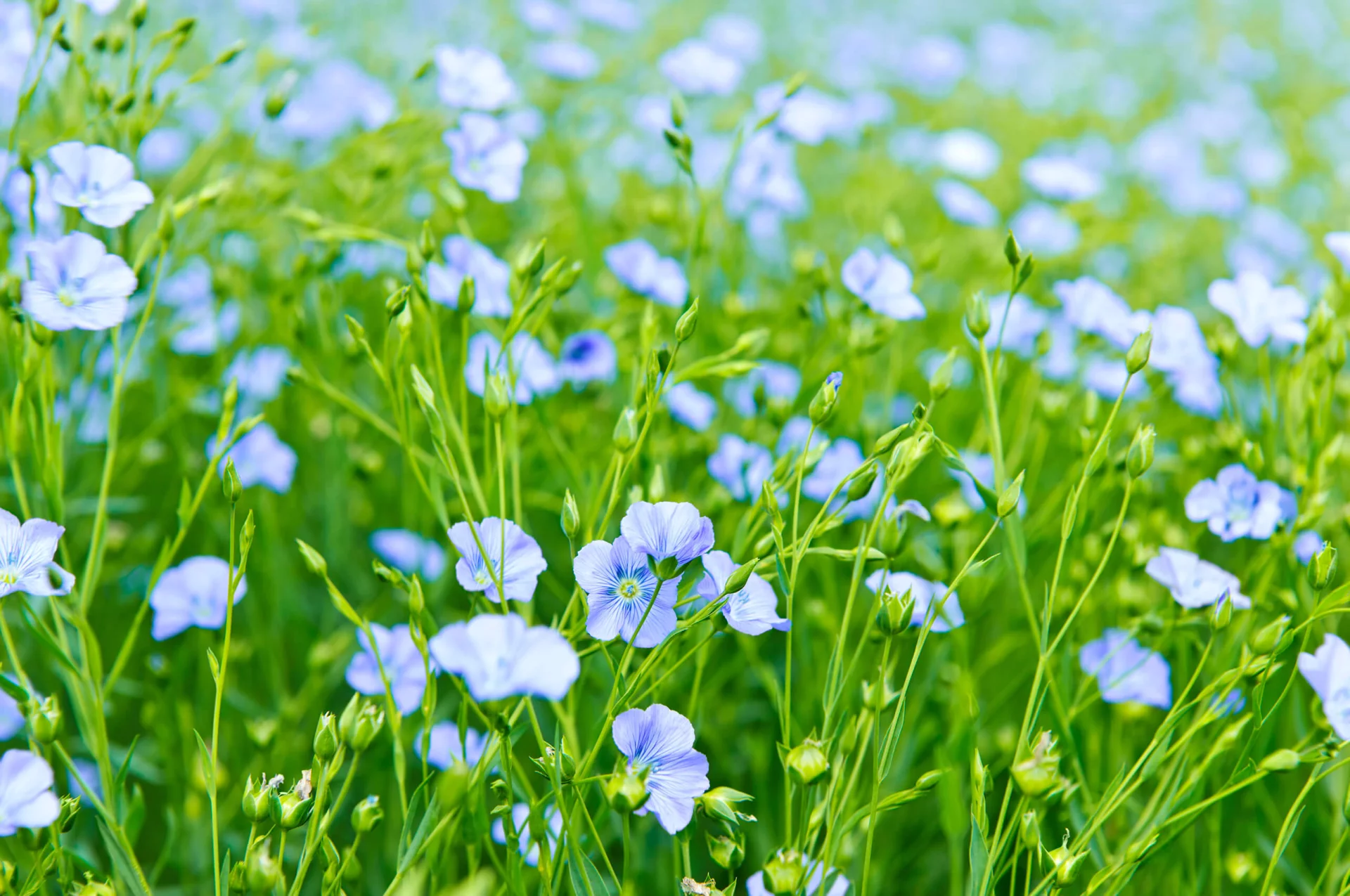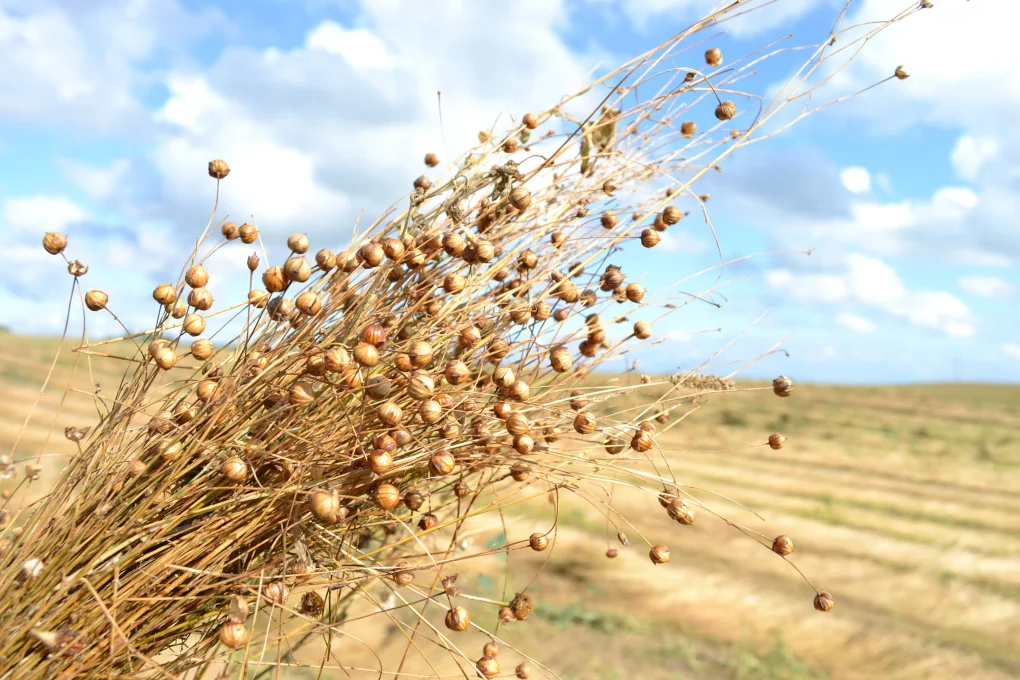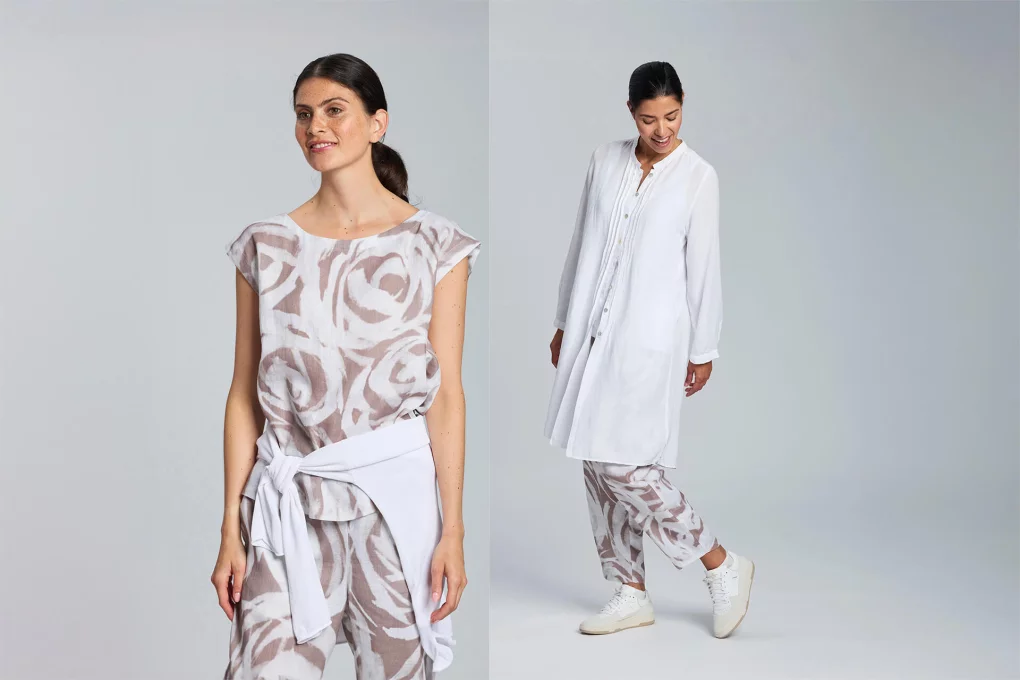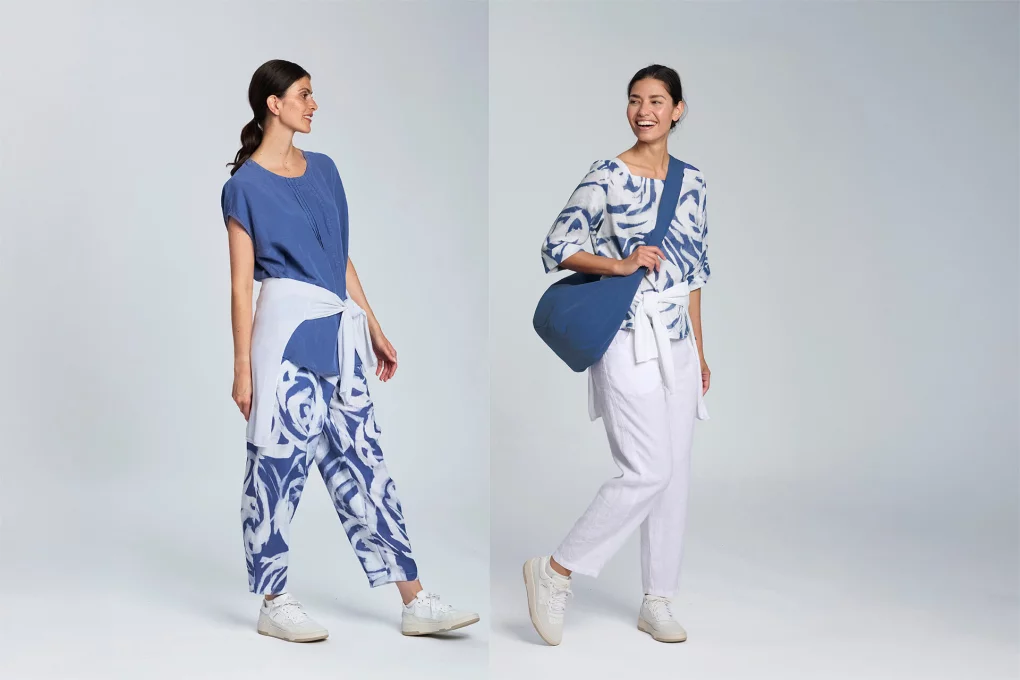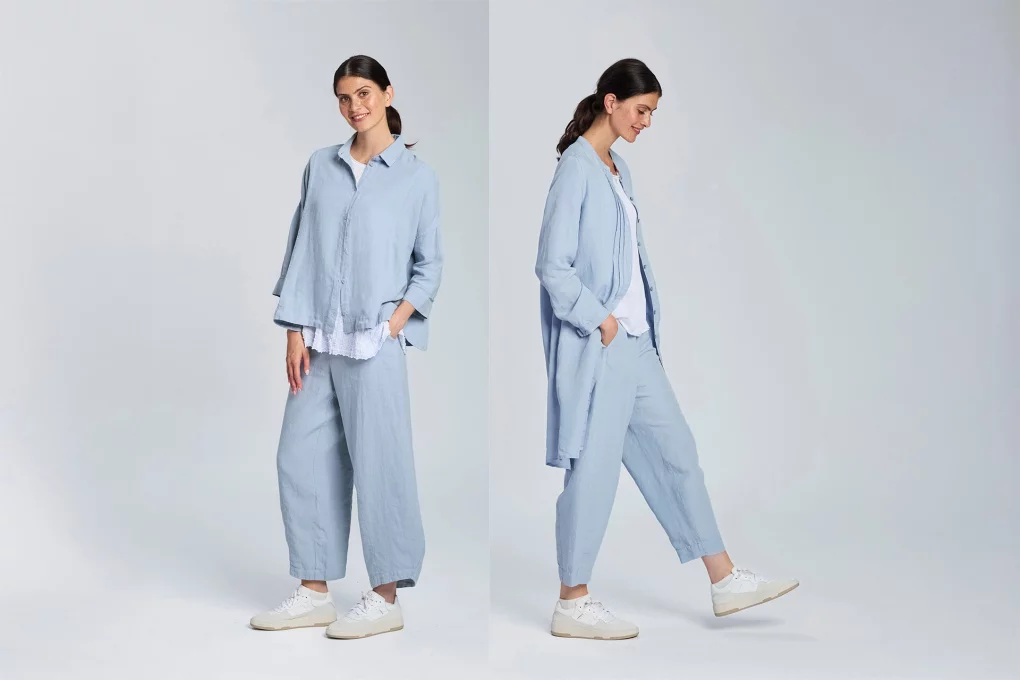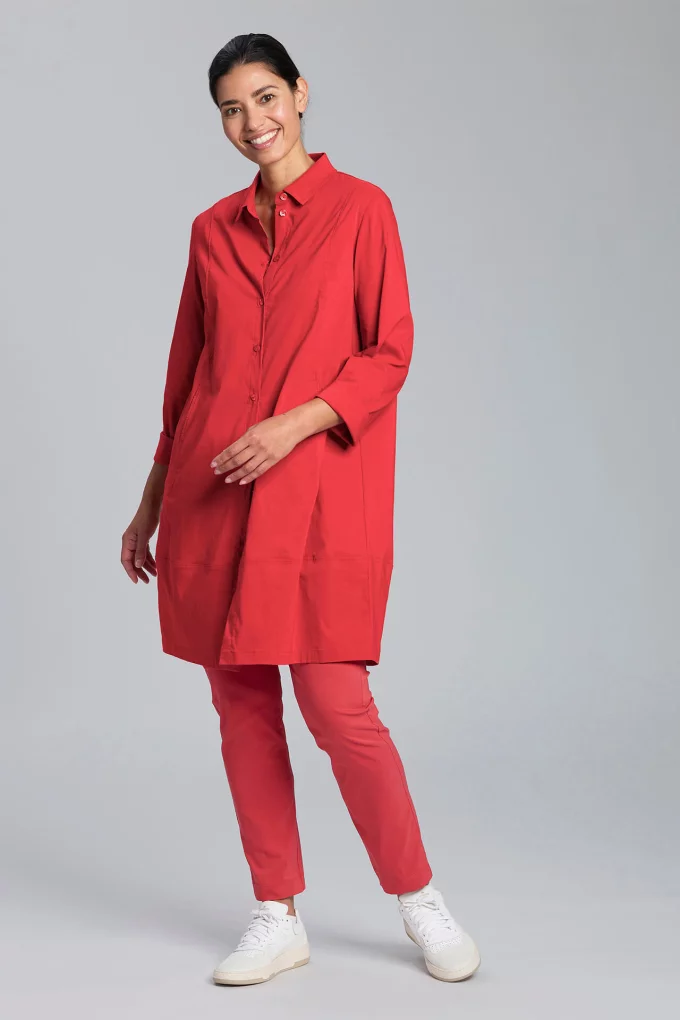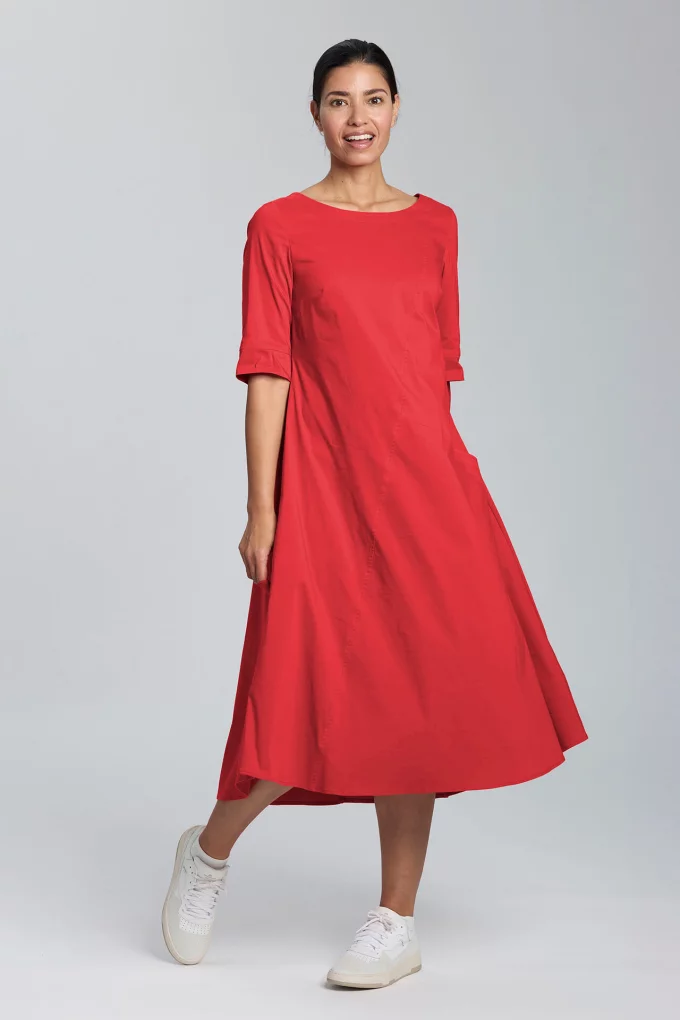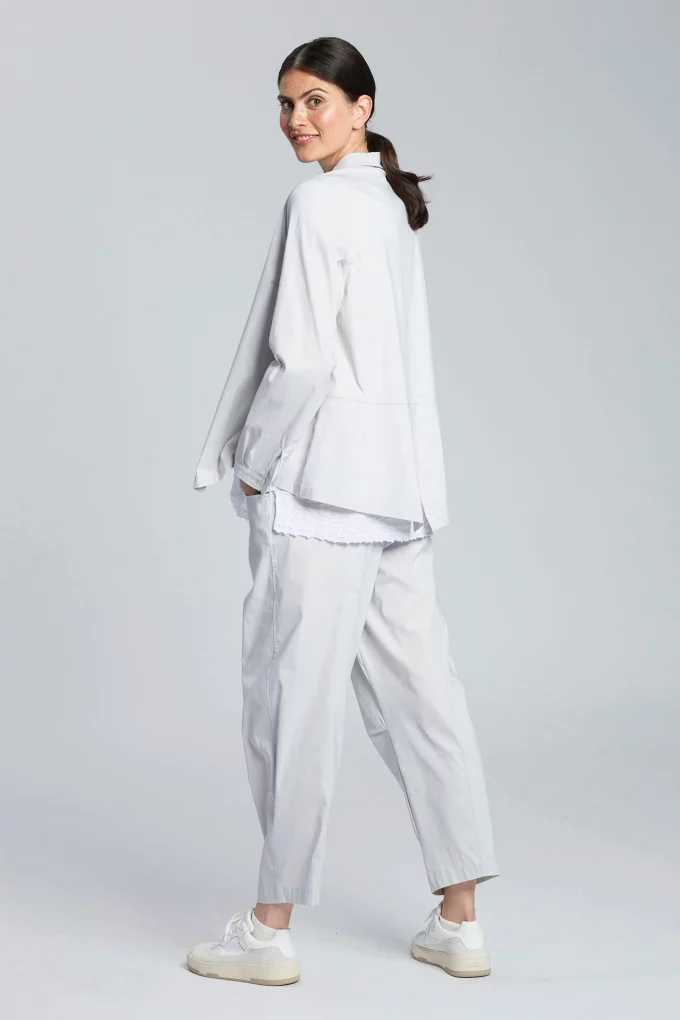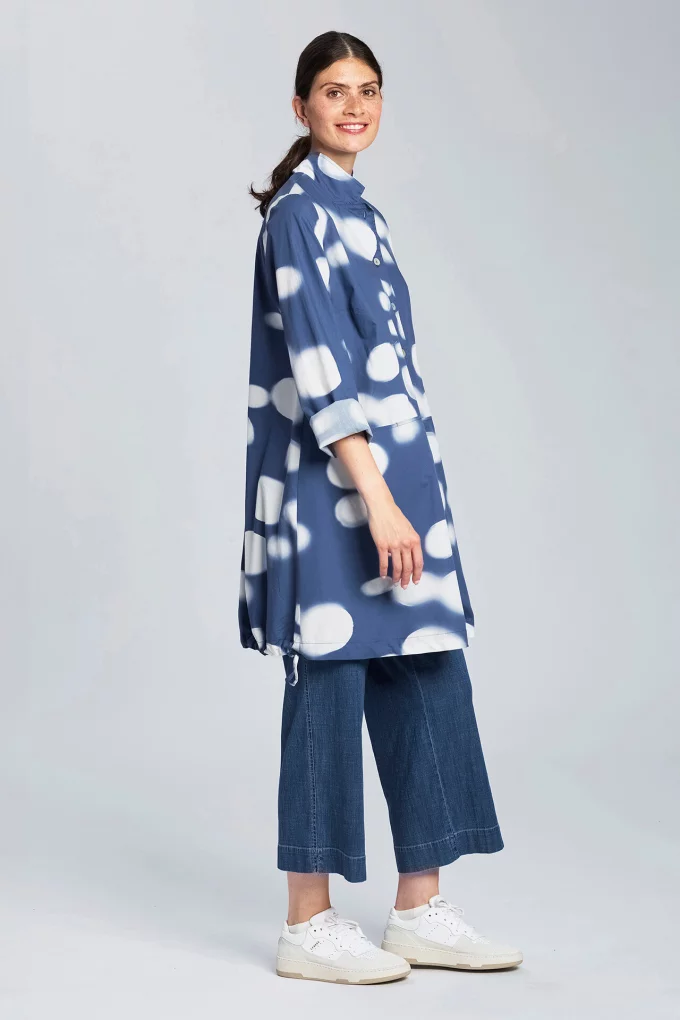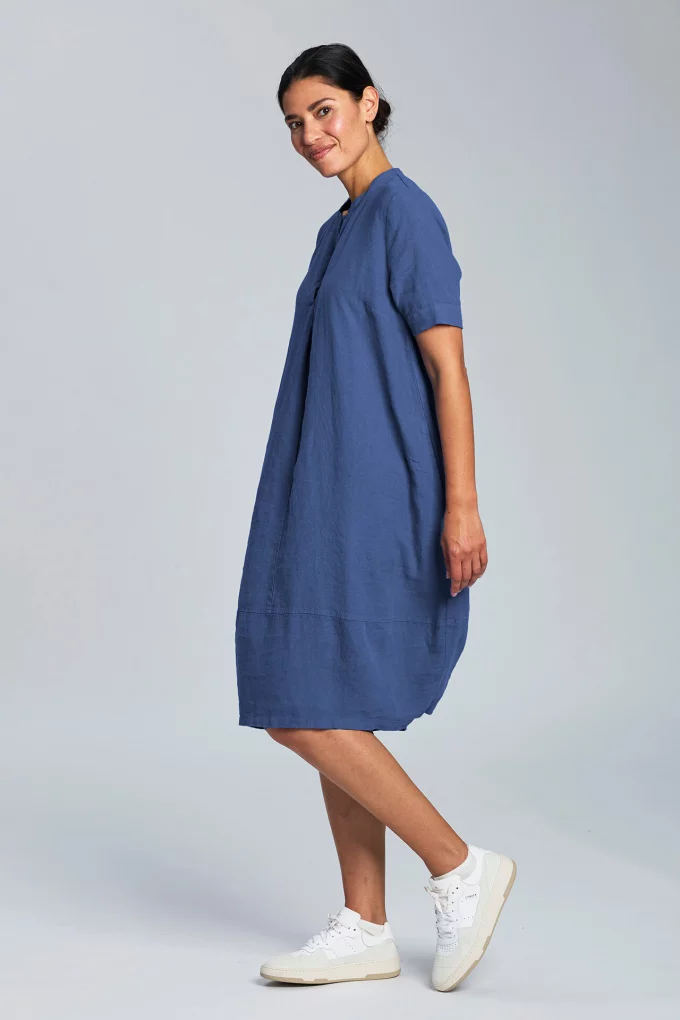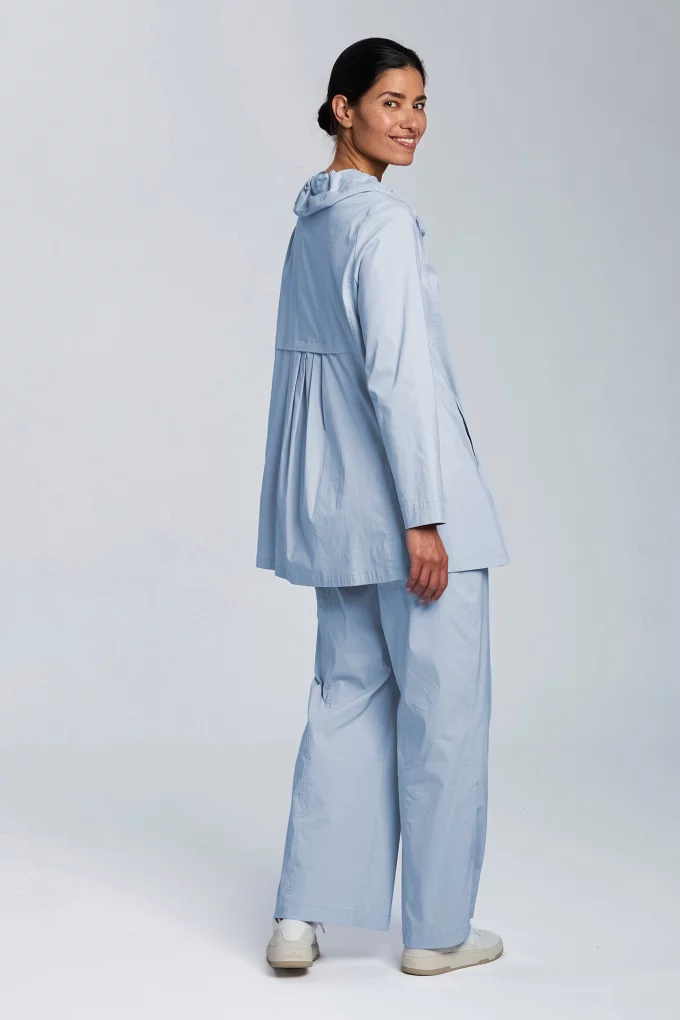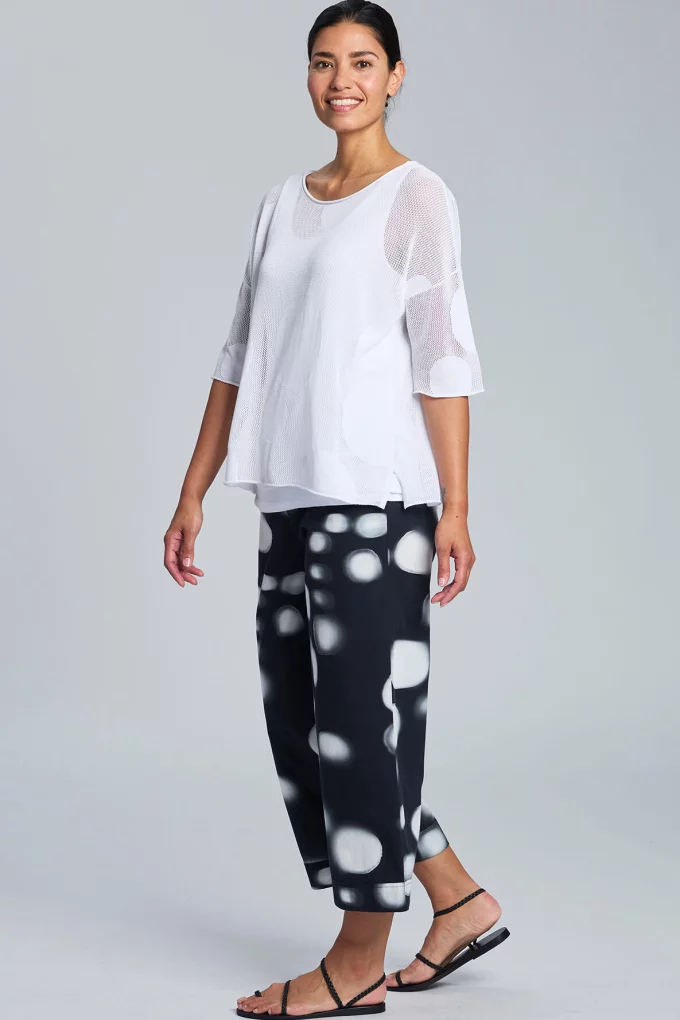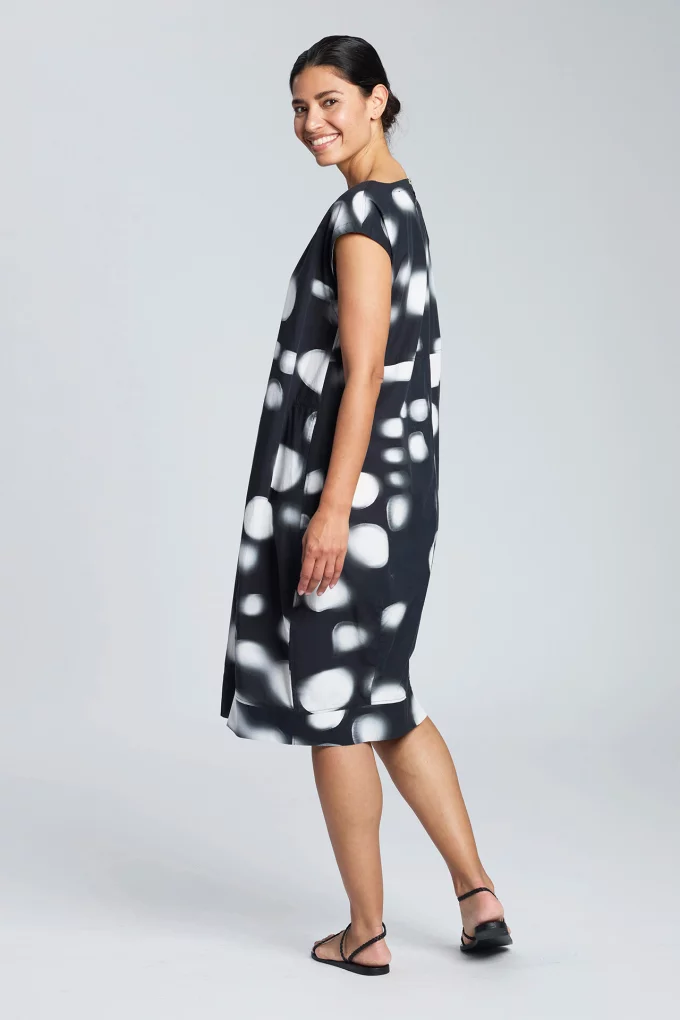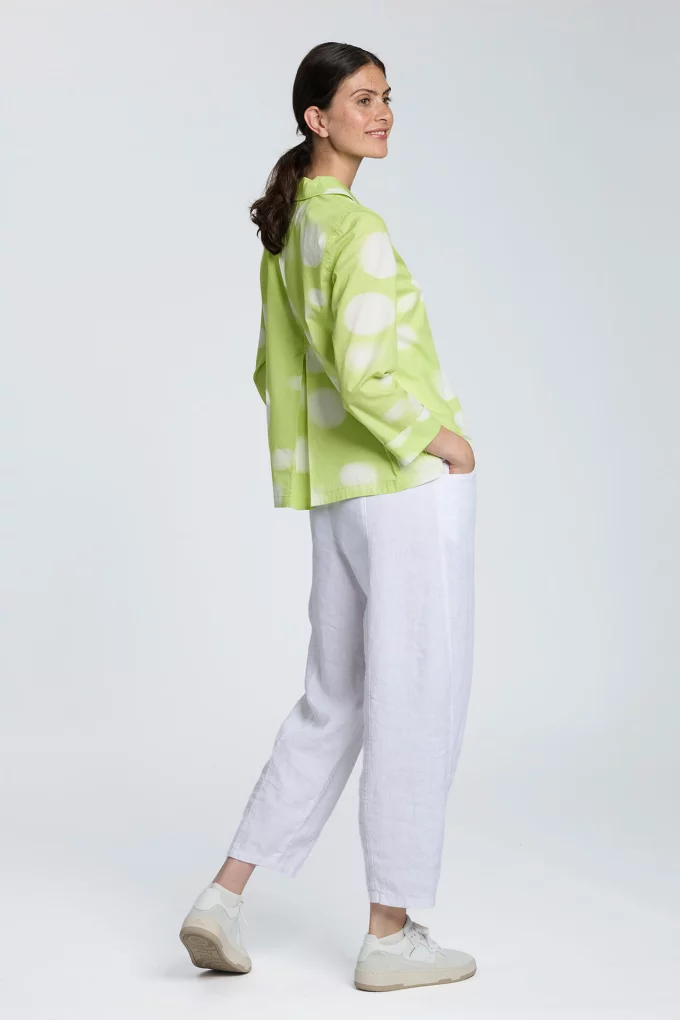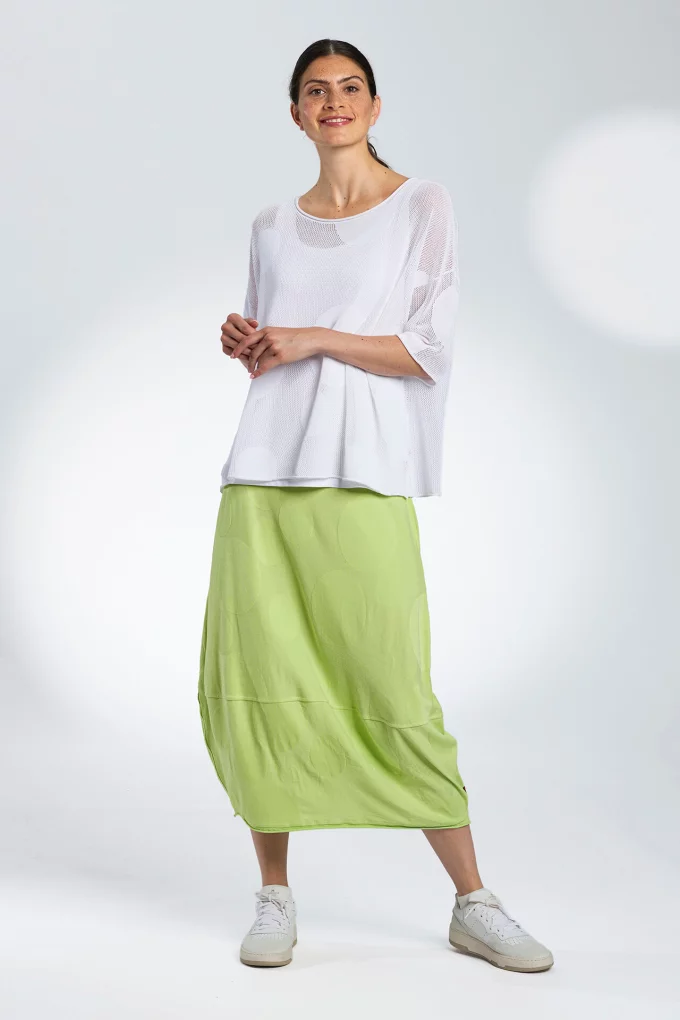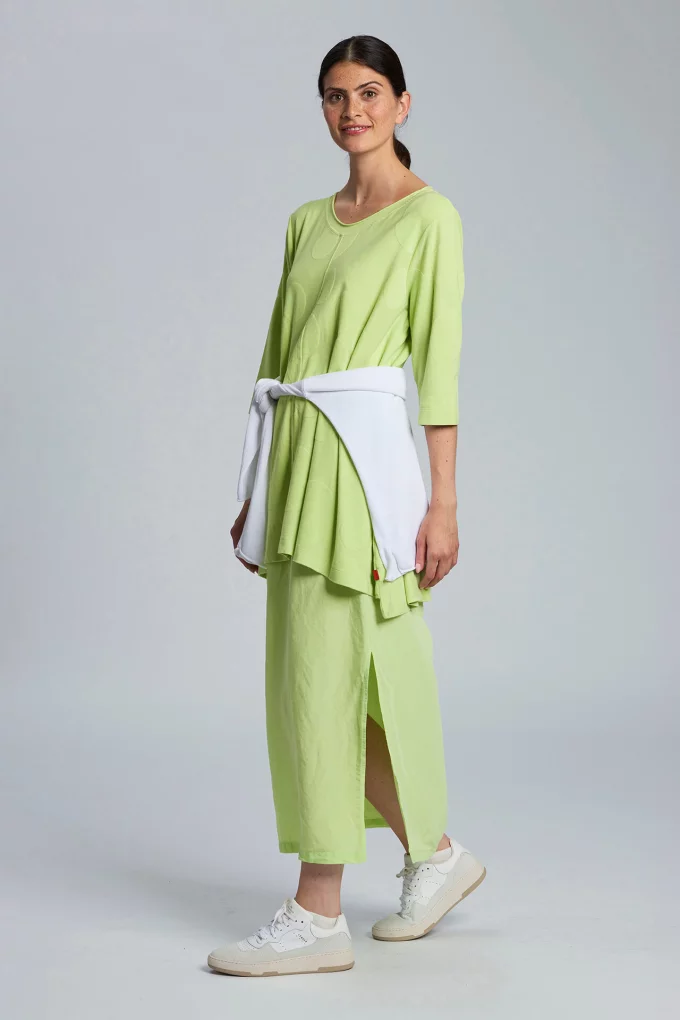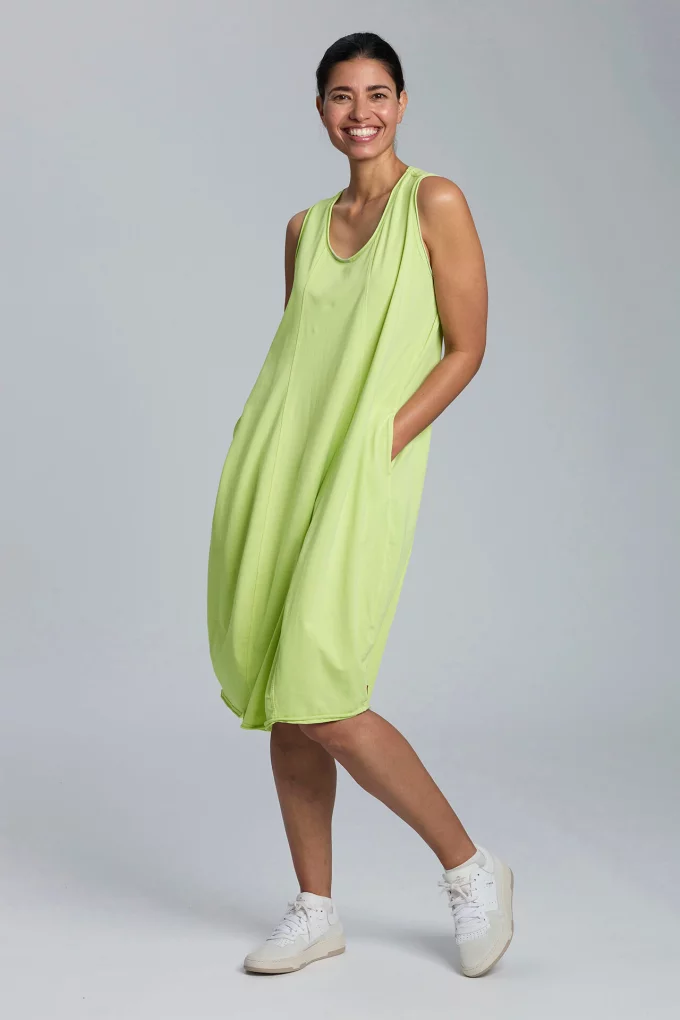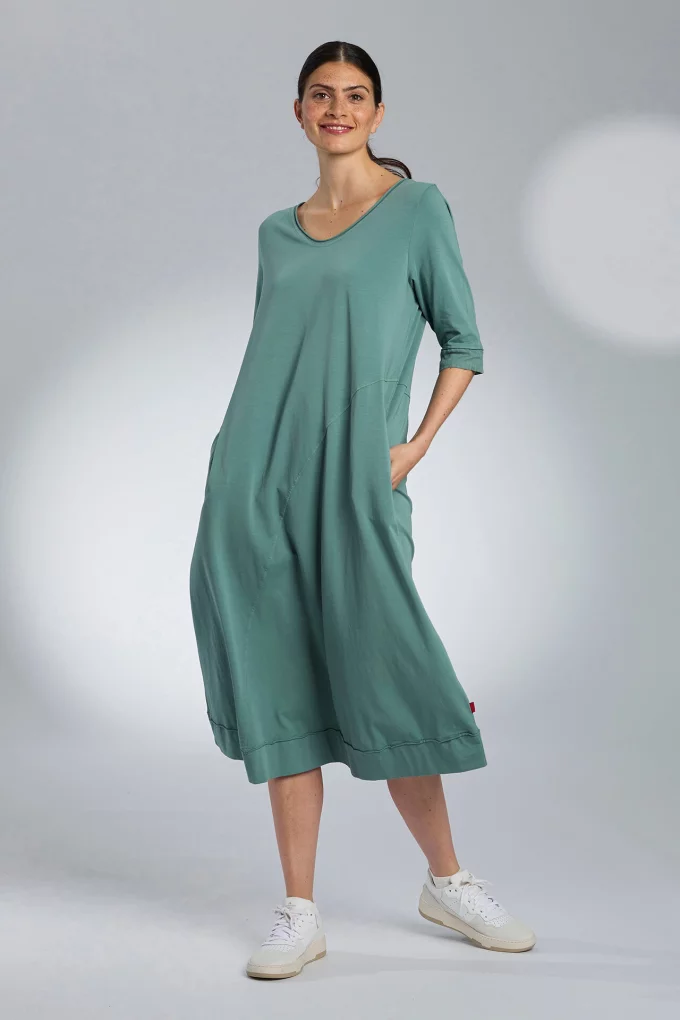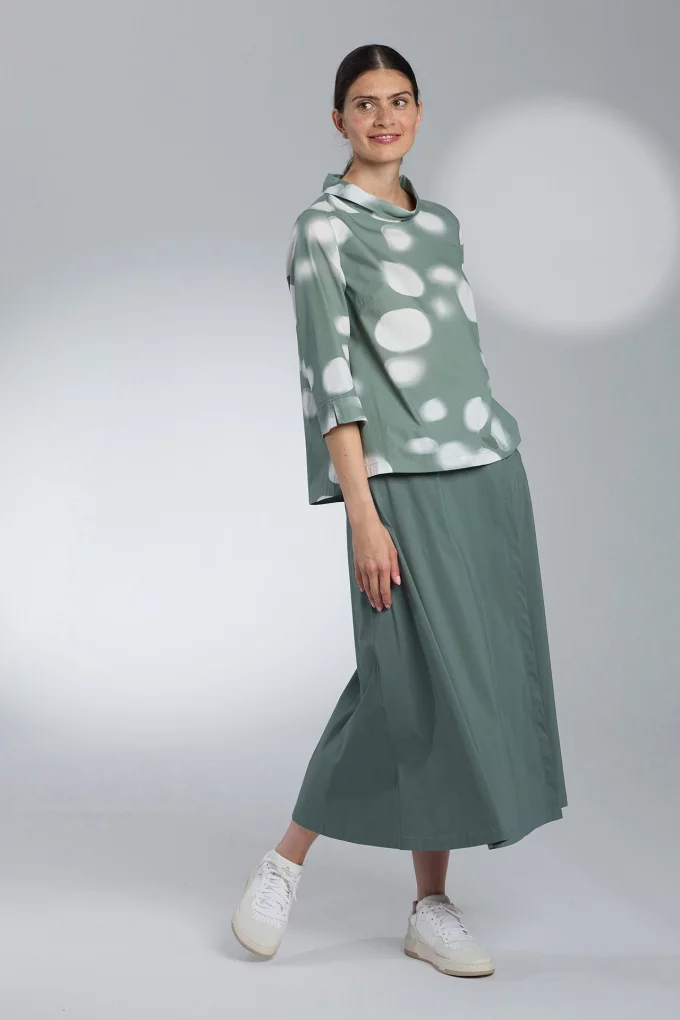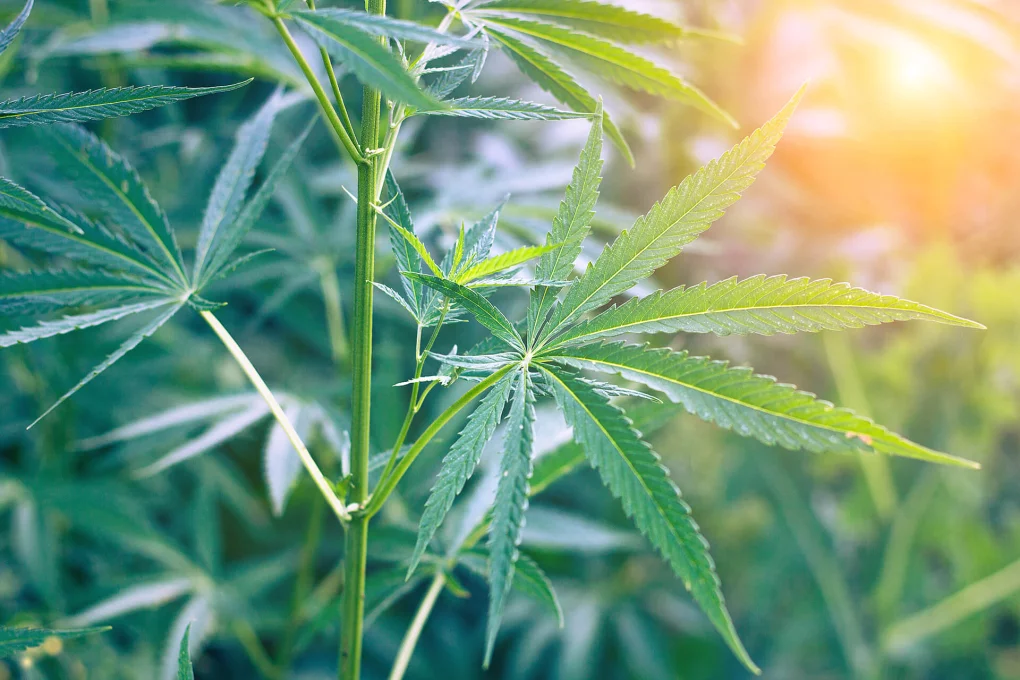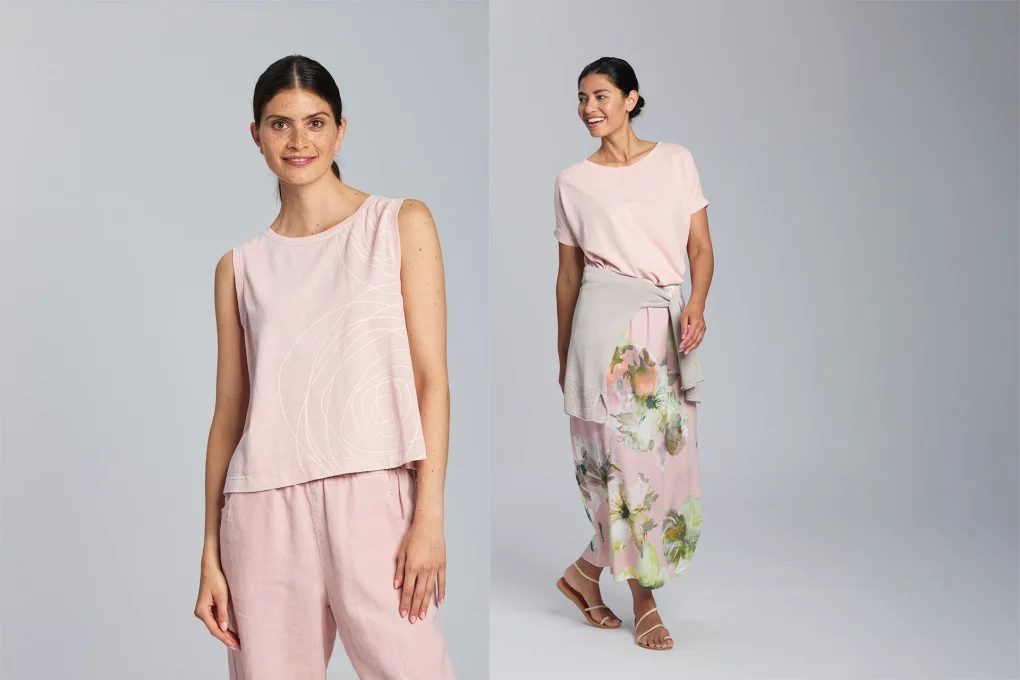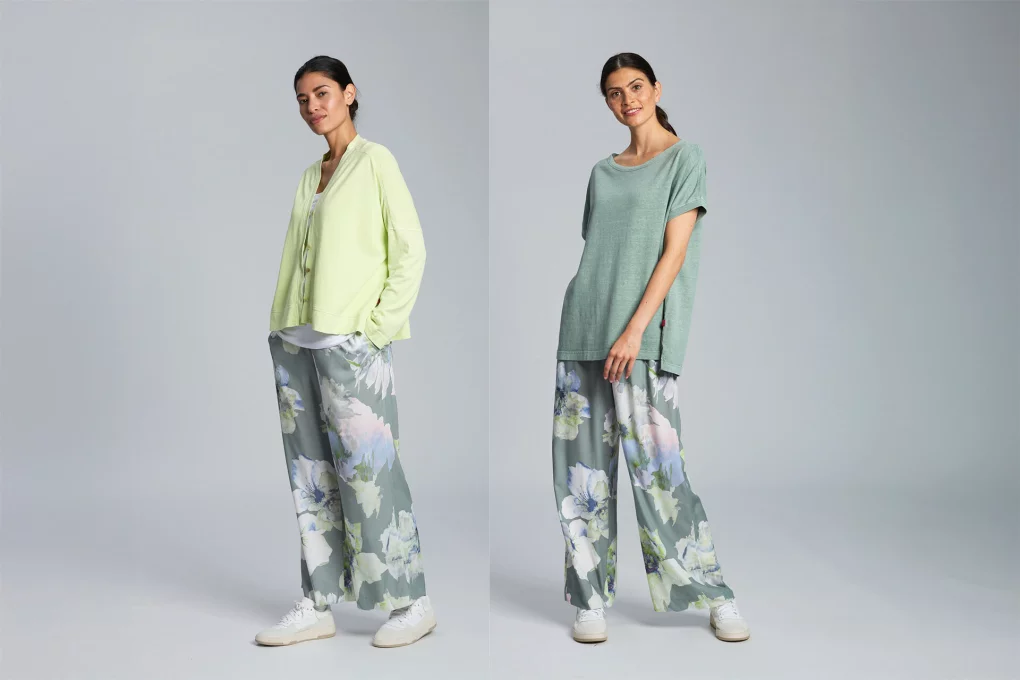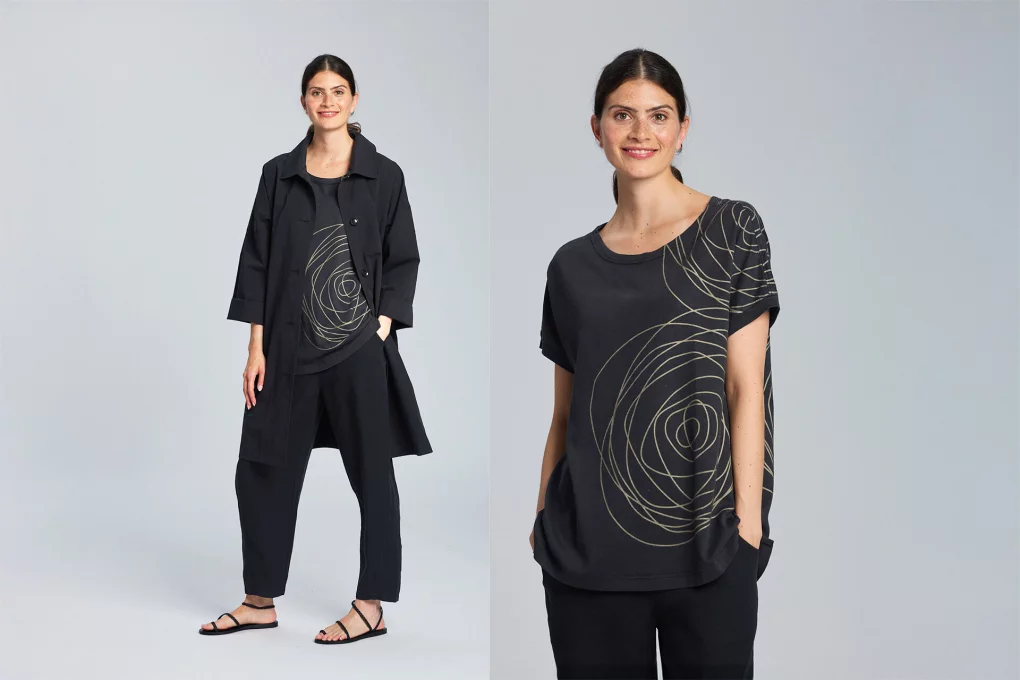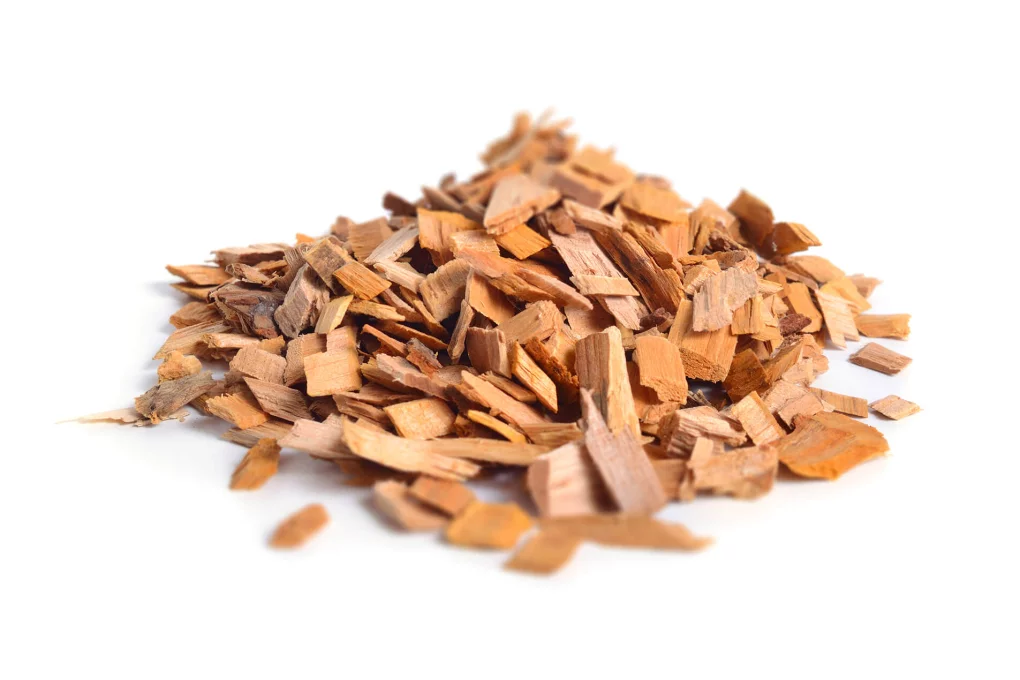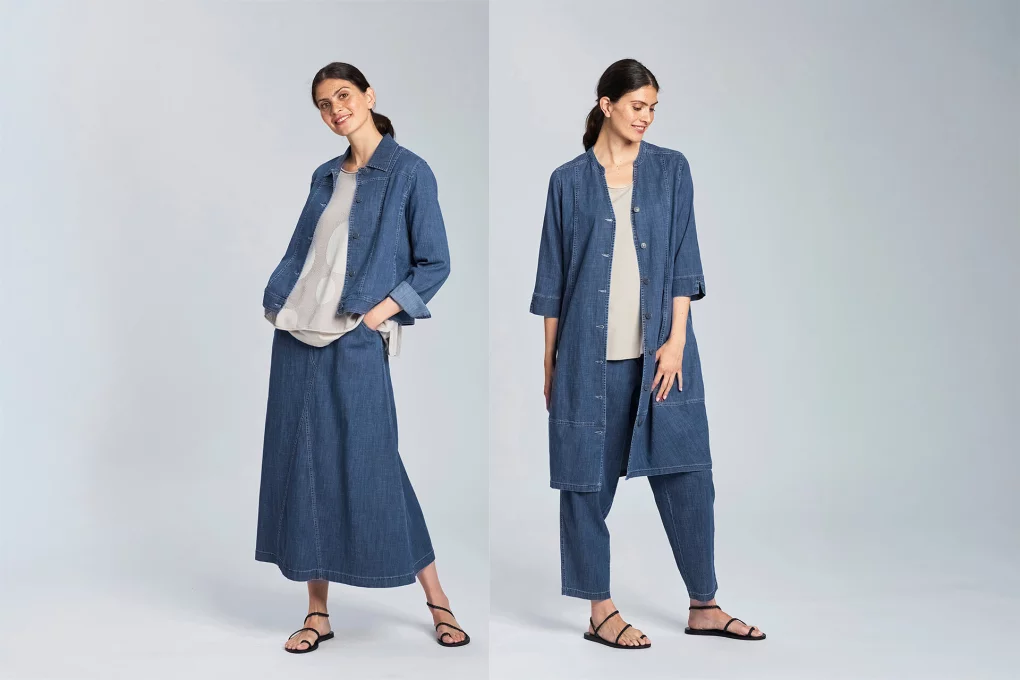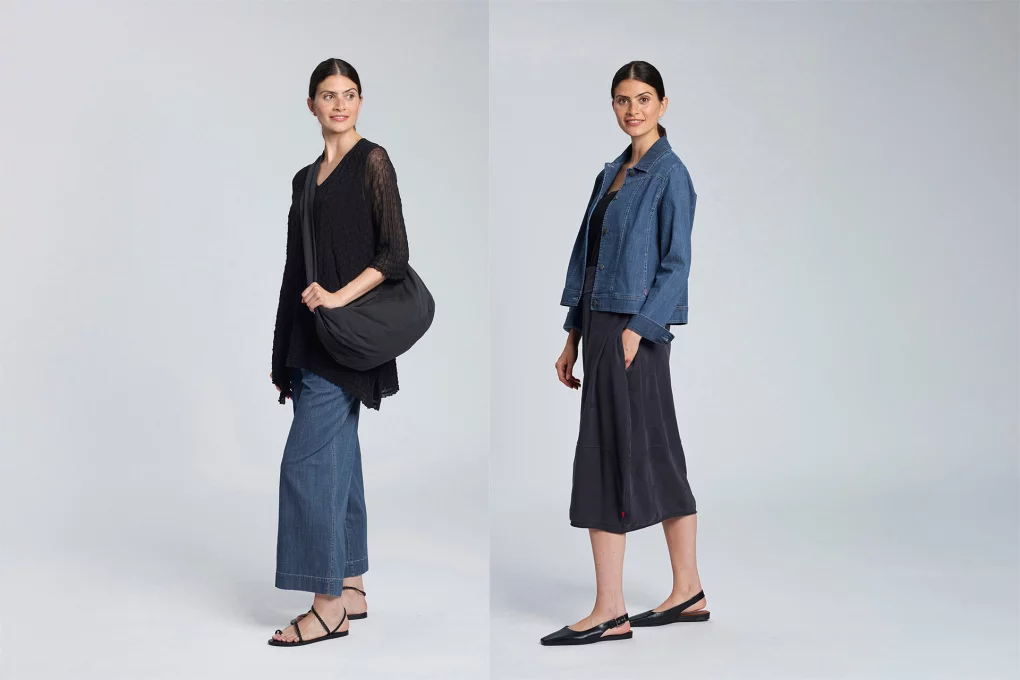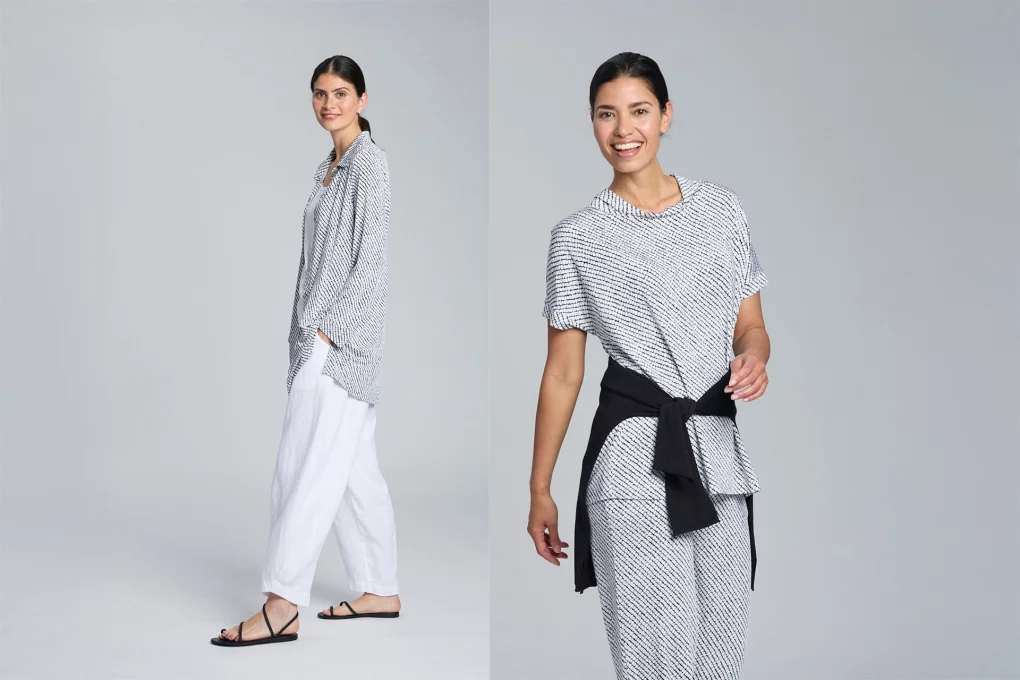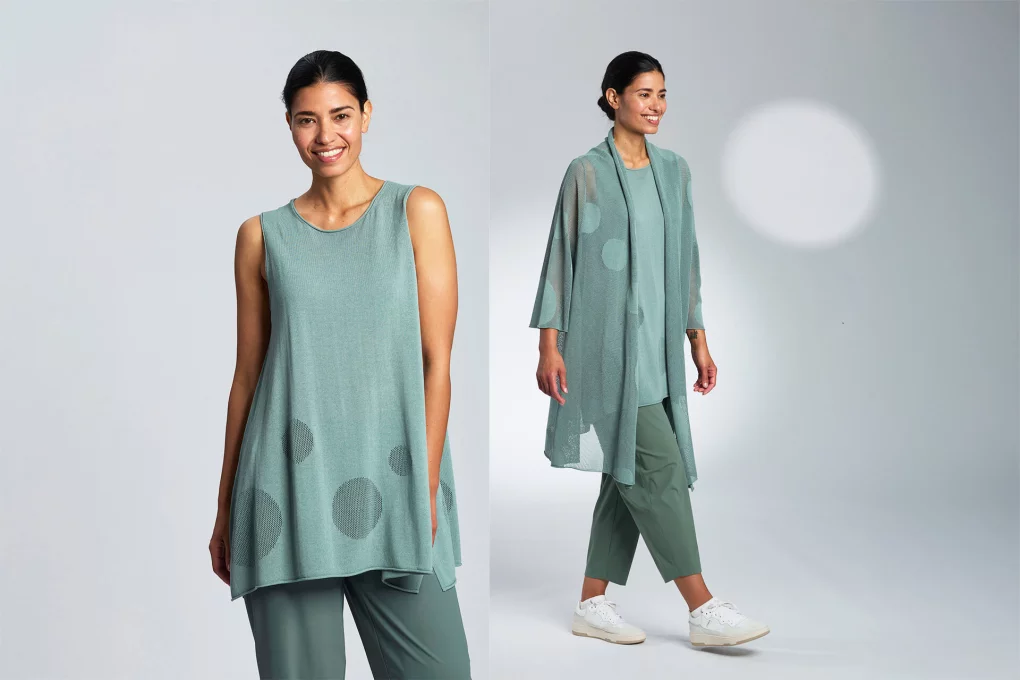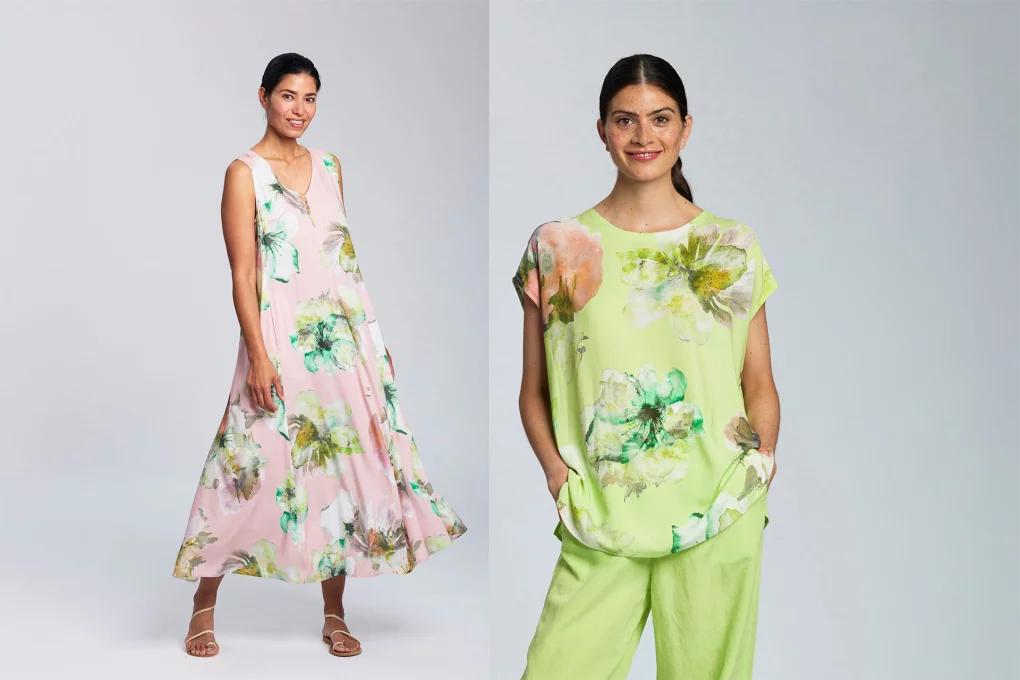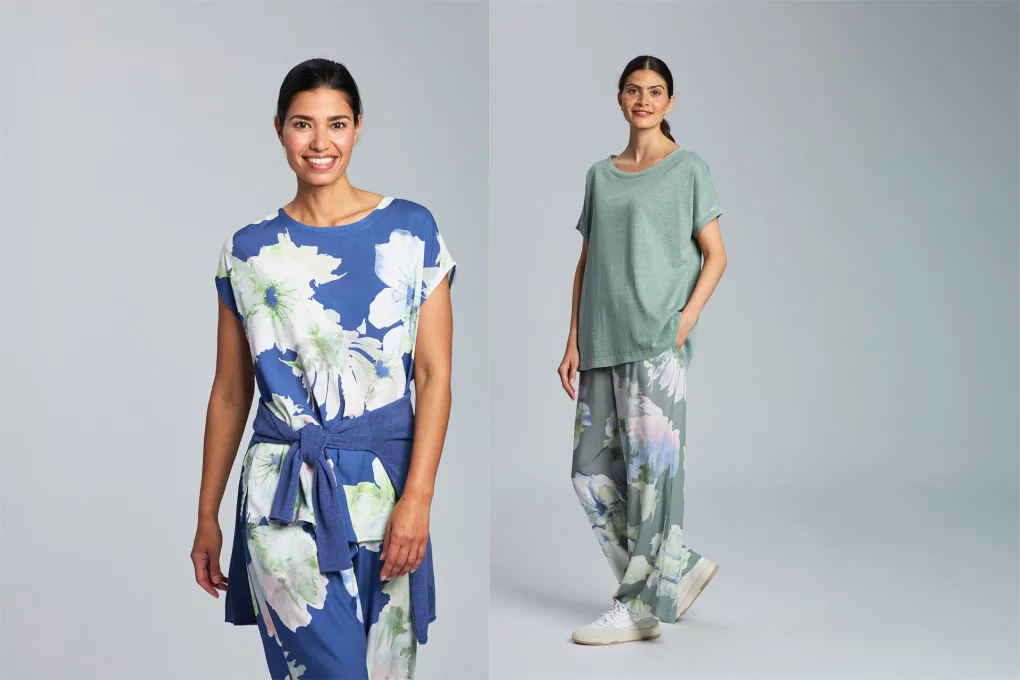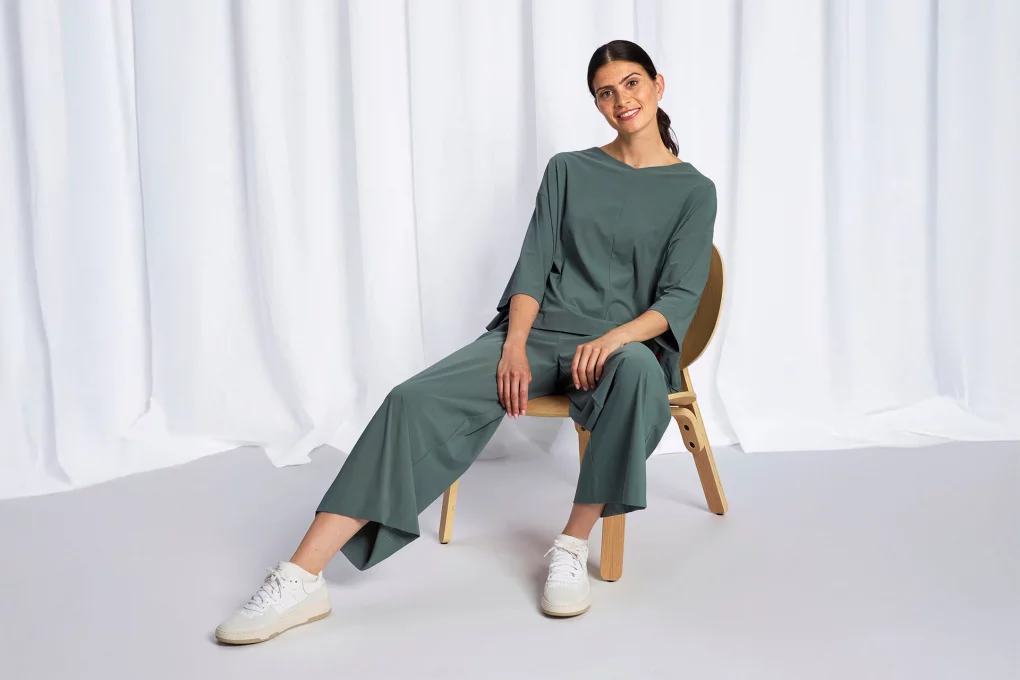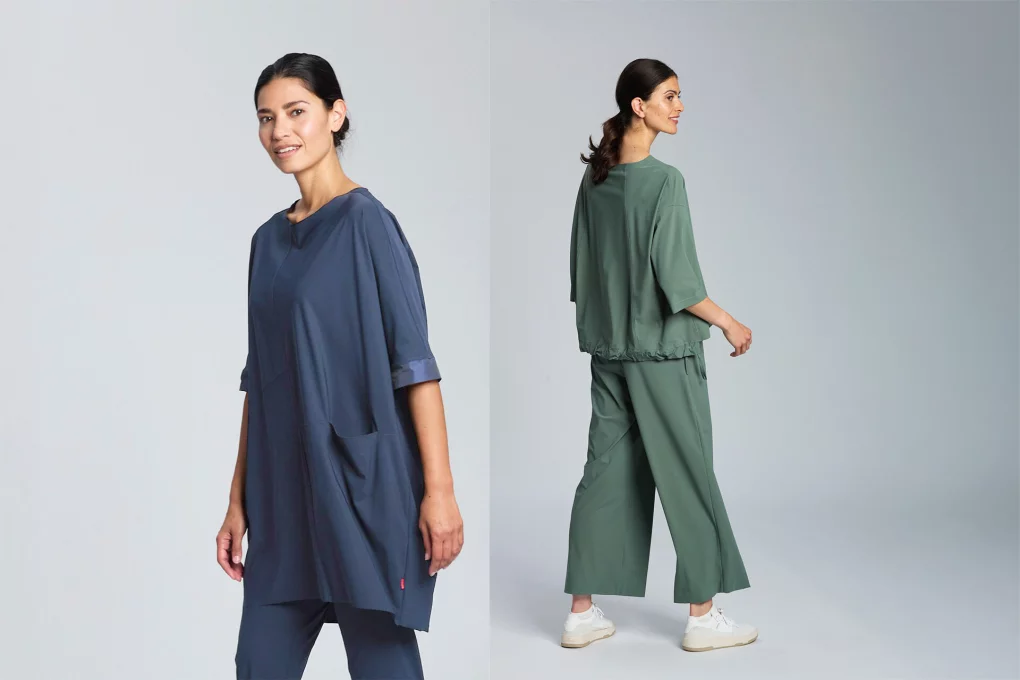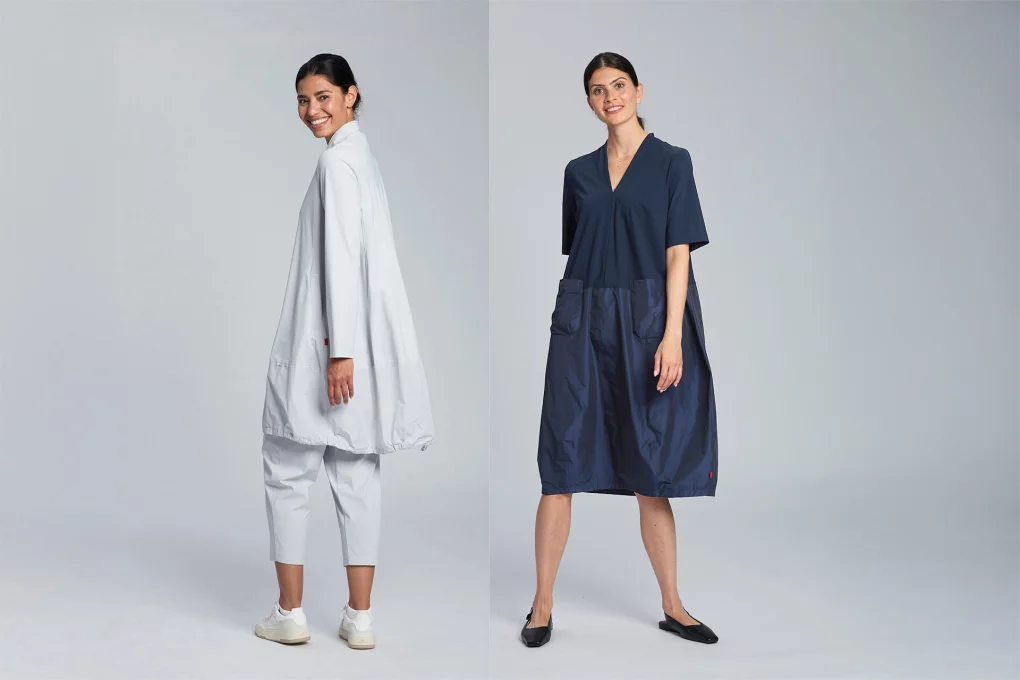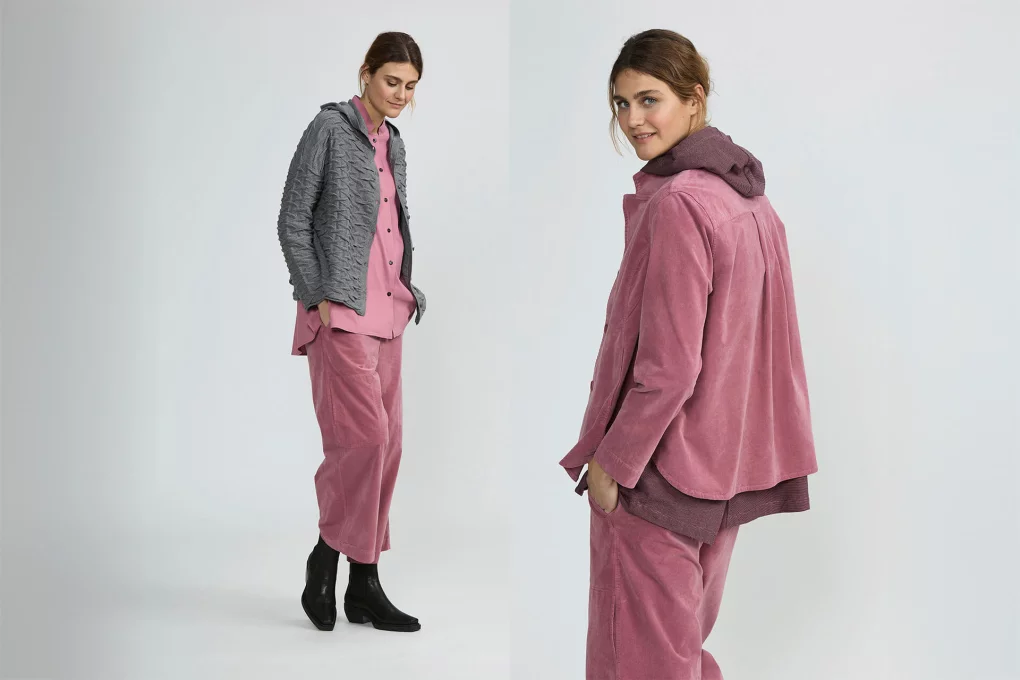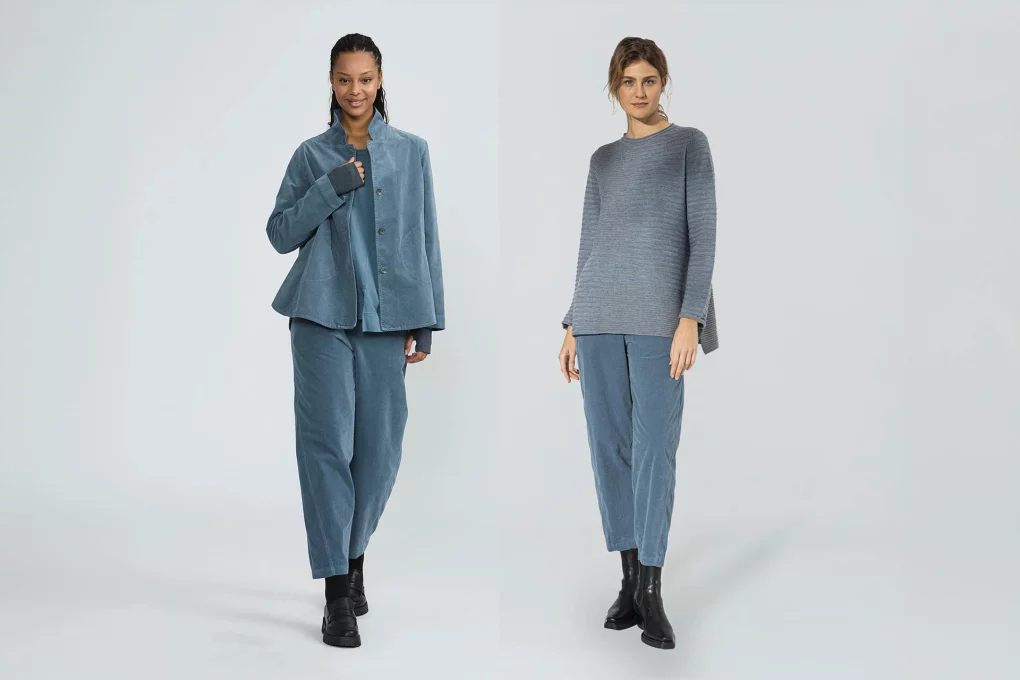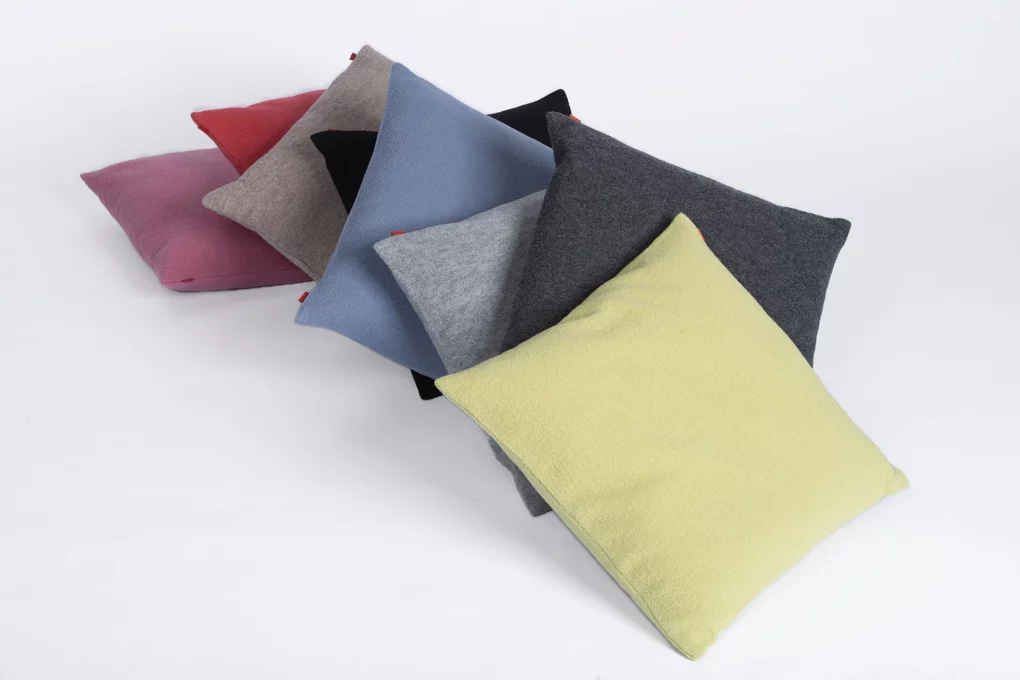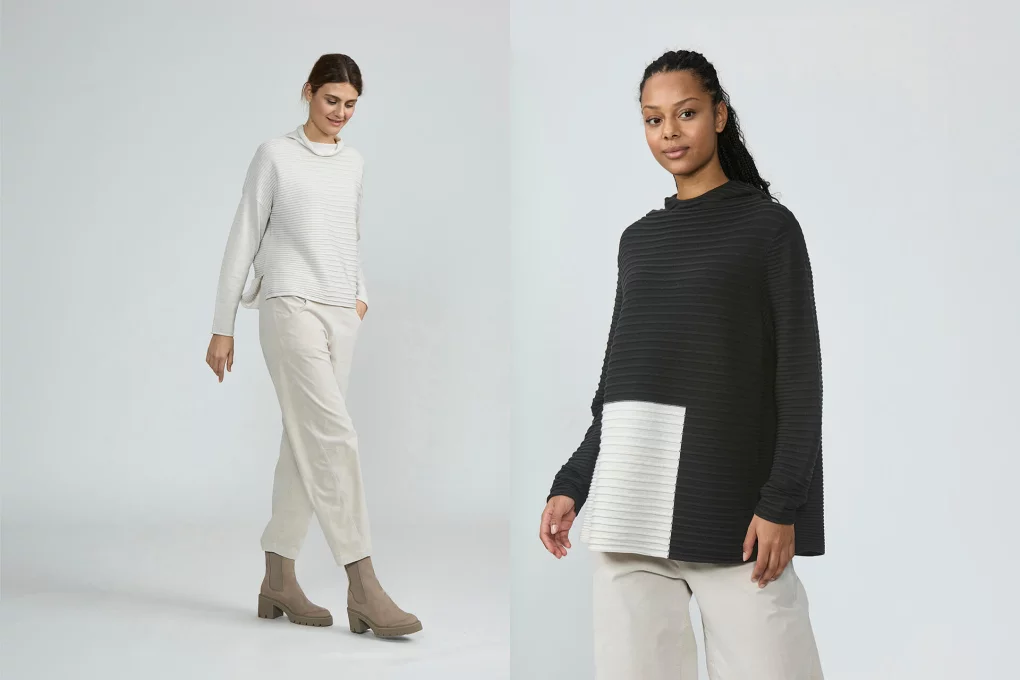Our materials
Here you will find interesting facts about the origin and development of our most important basic qualities as well as useful tips for their care.
COMFORTABLY, COOL AND SUMMERLY
FLAX
Made of 100% pure linen, VETONO linen has a medium weight and is perfect for summer wardrobe. Garment dyed, the beautiful colours shine and provide a particular authentic look.
80% of the world's flax fibre production comes from Europe, and France is the world leader. The highly resilient plant requires little water during the growing and processing stages and is largely pest resistant. Flax fibres are known for their great ability to absorb water. This is due to a high content of pectin, the components that hold the fibres together.
Pectin in flax textiles give them a "living", heat-regulating quality. Linen feels pleasantly cool, especially in hot weather. Depending on the climate, linen can store or repel water - up to 20% of their weight - without feeling clammy. A guaranteed feeling of comfort.
Linen is a naturally hypoallergenic, antibacterial fabric with a flat structure. Wearing properties known and appreciated since the Middle Ages.
Care Tip:
Machine wash higher-quality linen with the same or similar colours on the gentle or delicate cycle at 30° with mild soap without optical brighteners. White linen can also tolerate higher temperatures. Do not remove stains locally. Subsequent ironing, ideally from the left, smoothes the fibres and makes them more durable.
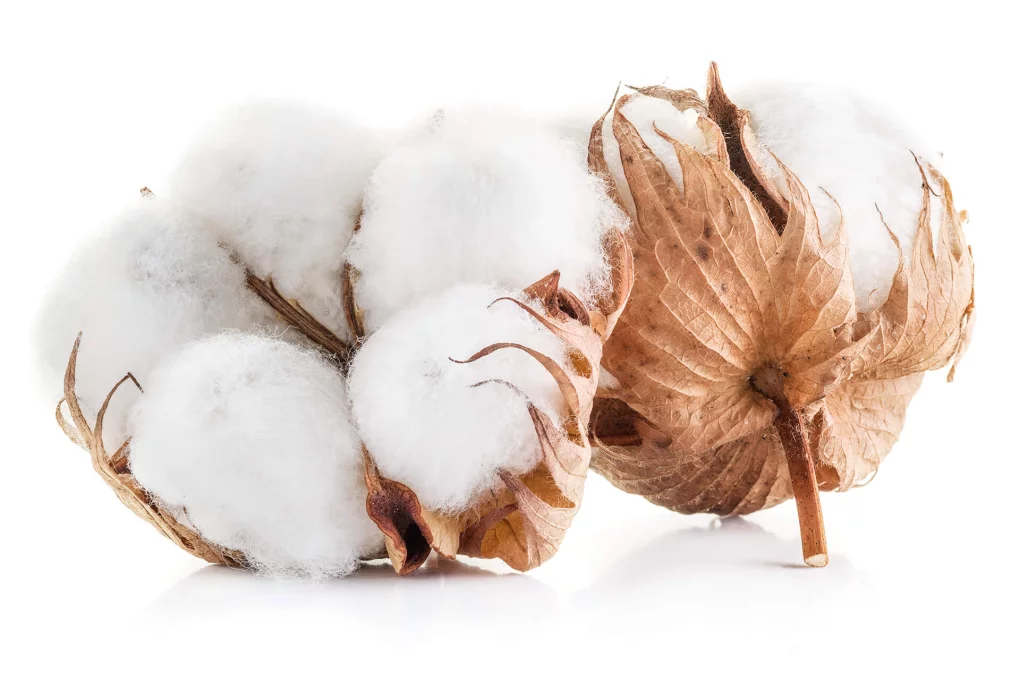
NATURAL, SKIN FRIENDLY AND DURABLE
COTTON
The cotton plant originates from the rainy and warm tropics of Asia, Africa and Latin America. It was cultivated by the Mayas in Mexico and the Incas in Peru over 7,000 years ago. Today, cotton is produced in over 70 countries on all continents of the world.
Cotton is a natural plant fibre and consists of about 91 percent cellulose, which is extracted from the fruit capsules of the cotton plant.
The raw material consists of the seed fibres of the ripe cotton fruits. For production, the cotton fibres are harvested, cleaned and cored. The cotton fibres are sorted by length. The long ones are spun into threads and used for textile production. The short ones are used for cellulose production, e.g. for viscose.
Cotton has good strength and can absorb a lot of humidity. It is soft and yet durable. Cotton clothing is very skin-friendly, long-lasting and easy to clean.

ORGANIC COTTON
Part of the cotton used by our partners comes from controlled organic cultivation. In our collections, it is blended with hemp to create jersey and with linen to create woven fabrics. Organic cotton is characterized by sustainable methods in cultivation and harvesting. In addition, the amount of water used is significantly less than in the production of conventional cotton.
Care Tip:
Machine wash high-quality cotton with the same or similar colours on the gentle or delicate washing cycle at 30° with mild soap without optical brighteners. White cotton laundry can also tolerate higher temperatures. Knitwear and jerseys pull into shape and hang dry. Ironing afterwards smoothes the fibres and makes them more durable.
THE ALL-ROUNDER AMONG PLANT FIBERS
HEMP
Hemp is a robust, modest plant and grows on almost any soil. It requires low watering, can be cultivated with little energy input and is biodegradable (compostable).
In addition, the hemp plant is very resistant to pests and fungi, so that neither chemical herbicides nor fungicides need to be used in cultivation.
Hemp can be processed into yarns and then into textiles with little energy input. With its hypoallergenic and antibacterial properties, hemp garments have a special added value and are also skin-friendly and breathable.
Care Tip:
Machine wash hemp jersey with same or similar colours on gentle or delicate cycle at 30° with mild soap without optical brightener. Do not remove stains locally. Subsequent ironing, ideally from the left, smoothes the fibres and makes them more durable.
SOFT, BREATHABLE AND SKIN FRIENDLY
TENCEL™
Our fabric manufacturers use Lyocell fibers (CLY) from the Lenzing company in Austria. They are designated with the proprietary brand name TENCEL™. Lenzing specializes in the environmentally friendly and resource-saving production of cellulose fibres. The starting material for production is wood from sustainable, certified forestry. In other words, a purely botanical origin.
The cellulose is obtained from sustainably grown wood, in a closed manufacturing process. The result is a strong fibre with unique physical properties. It is soft, breathable and skin-friendly.
Care Tip:
Machine wash high-quality fabrics or jerseys made of Tencel or Tencel blends with the same or similar colours on a gentle or delicate cycle at 30° with mild detergent without optical brighteners. Do not remove stains locally. Subsequent ironing, ideally from the left, smoothes the fibres and gives the fabric back its matt sheen and soft drape.
FLOWING, SOFT AND BREATHABLE
VISCOSE
Viscose fibres are produced from fibre cellulose in a multi-step process. The botanical base material is mainly wood, but for example, remnants from the cotton capsule (linters) left over from further processing are also used.
In a first step, the cellulose of the wood is transformed in a spinning liquid. This honey-like, viscous mass is forced through fine nozzles into the spinning bath. The escaping jet of the spinning liquid is caused to solidify by chemical processes. Cellulose fibres of unlimited length, continuous filaments, are produced. In the further course of the process, the fibres are cut and put through a coordinated washing process and dried.
The fibres are characterized by their flowing drape and matt lustre, and they have the typical properties of all cellulose fibres (e.g. cotton, linen, hemp, etc). They are skin-friendly, breathable and soft. Moreover, biodegradable and compostable.
Care Tip:
Machine wash high-quality fabrics or jerseys made of viscose or viscose blends with the same or similar colours on a gentle or delicate cycle at 30° with a mild detergent without optical brighteners. Do not remove stains locally. Subsequent ironing, ideally from the left, smoothes the fibres and gives the fabric back its matt sheen and soft drape.
"TAKE LESS, GIVE MORE"
Viskose Ecovero
LENZING™ ECOVERO™ brand viscose fibers are the new standard for eco-friendly viscose in the fashion industry. Compared to conventional viscose, the production has a significantly smaller ecological footprint. Viscose consists of cellulose. The LENZING™ ECOVERO™ fibers are obtained from certified, renewable wood sources in an ecologically responsible production process in compliance with high environmental standards. The wood used here, the natural and renewable raw material, comes from FSC® or PEFC™ certified and sustainably managed forests.
Up to 50 percent less water is used in fiber production than with conventional viscose. In addition to the highly efficient use of water, the used water is cleaned before it is returned to nature.
According to the Higg Material Sustainability Index, the CO2 emissions in the production of LENZING™ ECOVERO™ viscose fibers are 50 percent lower than with conventional viscose.
Eurojersey Sensitive®Fabrics
Technical Stretch
The flowing, lightweight material made of polyamide and Lycra combines comfortable and sustainable aspects. A modern outer fabric, OEKO-TEX® STANDARD 100 certified, suitable for the needs of our active, mobile world.
The Italian manufacturer Eurojersey has been working intensively on reducing resources such as water, energy and CO2 emissions in textile production since 2007. Only materials from this production are labeled with the Sensitive®Fabrics trademark. The SensitivEcoSystem® program accompanies the entire life cycle of Sensitive® fabrics in order to make the project for environmentally friendly development transparent for all customers.
Originally developed for use in active sports, the super fine, highly elastic fabric is very pleasant on the skin, durable, breathable and dimensionally stable. The styles are ideal travel companions. Hard-wearing, easy to care for, quick to dry again (wash & wear) and virtually crease-free.
Care tip:
Machine wash Technical Stretch with the same or similar colors on a gentle or delicate cycle at 30°. Please use mild detergent without optical brighteners. Do not remove stains locally. Hang to dry.
SOFT AND FEMININE
FINE CORDUROY
The so-called BABYCORD or FINE CORDUROY is a velvet or pile fabric. However, this fabric does not have an even, smooth pile. Rather, it is a very finely ribbed, velvety surface. The basic fabric of our elastic FINE CORDUROY consists of cotton, viscose and elastane, the pile is made of 100% cotton (66%CO 32%CV 2%EA). The viscose in the background makes the fabric soft and feminine, the dense pile creates a velvety look, which brings out our intense colors particularly well.
The quality of the FINE CORDUROY is characterized, among other things, by its pile strength. Since the pile lies loosely between the warp threads in velvety fabrics, the density of the warp and the way in which the pile threads are held play a major role. The W-weave pile fabrics are of high quality, as is our baby cord. W-weave means that the pile is held with 2 warp threads. In contrast to this, the V-weave variant, in which the pile threads are only held with one warp thread and therefore loosen more quickly under stress. Our FINE CORDUROY is also SUPER ELASTIC. What does that mean? Another quality feature is the stretch behavior of the elastic fine cord. It is fixed by the meter in the stenter frame in such a way that maximum, constant elasticity with good recovery is achieved.
Care tip:
Turn fine corduroy clothing inside out and machine wash with the same or similar colors on a gentle or delicate cycle at 30°. Please use mild detergent without optical brighteners. Do not remove stains locally. Hang to dry. We recommend ironing the clothing inside out. This prevents shine and pressure marks.

HIGH QUALITY
VIRGIN WOOL
The difference between wool (WO) and new wool (VW) is actually very simple.
Pure new wool is a natural product that consists 100% of the wool of living sheep. It is considered to be of high quality and particularly pure.
Wool, on the other hand, can come from dead animals or be made from the remains of old textiles.
COMFORTABLE, WARM,
DURABLE AND WATER REPELLENT
Boiled Wool
Our boiled wool is a living material and a purely natural product. Only pure new wool (VW), water and a little soap are required for its production. The elastic knit fabric is fulled (moved) in warm water with soapsuds. This creates the tangle. The wool fibre is naturally curly. The lye supports the opening of the hair cuticles, which swell and tilt. Small air chambers are created and later provide warmth and almost water tightness. In contrast to loden, which is felted from woven wool, the knitted material remains elastic, comfortable, and pleasant to the touch even after fulling.
During the production process, the rope intentionally shrinks and thus changes its density. This makes BOILED WOOL durable, wrinkle-free and resistant to dirt. BOILED WOOL can absorb vaporous moisture without feeling damp. This effect optimally supports the body's climate regulation and ensures high wearing comfort and effective protection against the cold.
Due to the compression, the cut edges of our BOILED WOOL are much more stable than with conventional fabrics and thus allow casual processing with open cut edges. The colour palette is developed individually each season to match the colour concept. In the neutral colours we use the possibility of knitting with mottled yarns. The feel and appearance of these melanges are always slightly different from the uni colours.
Care tip:
Thanks to lanolin, boiled wool has self-cleaning properties. Just hang it out in the fresh air, preferably in damp weather. Boiled wool simply loses all odors due to the special structure of the wool. The environment is happy here! Simply allow coarse dirt to dry and then brush off. Liquids can be quickly absorbed/wiped off with a cloth, this should avoid any stain.
EXTRA HIGH QUALITY, FINE AND SOFT
EXTRA FINE MERINO
Ökotex 100
The best new wool comes from Merino sheep. The wool of the Merino sheep is particularly fine and has a strong crimp. The Merino sheep originally came from North Africa, was later bred in Spain and moved to Australia and New Zealand when the New World was discovered.
The pure merino wool is much softer than normal new wool and does not scratch the skin. MERINO EXTRA FINE is a particularly fine and high-quality selection of this merino wool.
Care tip:
Merino wool can be washed in cold water or, at most, lukewarm water. It is best to wash your beautiful merino jumper cold, by hand with a little wool detergent or in a good wool washing program. Then squeeze out carefully, do not fring, and shape on a terry towel, ideally on a drying rack, and dry lying flat. Never dry knitted items on the hanger, otherwise they may stretch and become deformed.
